
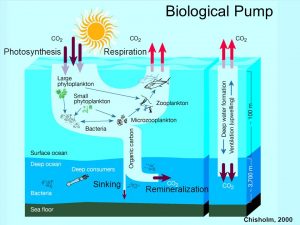


If you are a smoker, you have surely heard that smoking damages your lungs. More surprisingly, without even killing the cells, the smoke does damage to the tiny hair-like extensions on the surface of your cells called cilia.
You may have known about the presence of cilia in the body, but why is it important to keep them in good shape?
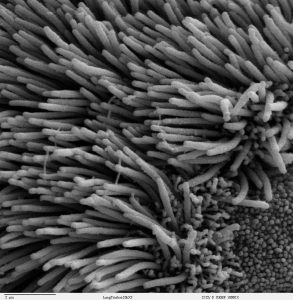
Photo by Louisa Howard, Wikipedia Commons.
Cilia are found in many parts of the body, notably the respiratory system. The cilia we find here are motile, which means they can move (non-motile cilia also exist). They coat the nasal passageways all the way down to where the trachea (the windpipe) first branches off into the lungs as air passages called bronchi.
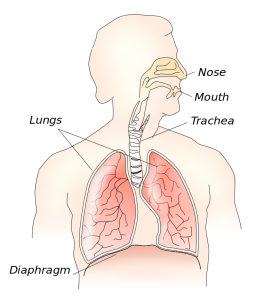
Created by Theresa Knott, GNU Free Documentation License.
The most crucial function they carry out in the respiratory system is to protect the passageways and to beat in a rhythmic manner to keep the airways clear of mucus and dirt. (See video below showing live beating of the cilia, from the Cilia Scientist)
Interestingly enough, in the nasal cavity, the cilia beat so that the particles move backwards towards the pharynx (the back of the throat), while in the trachea, the cilia beat upward towards the pharynx! This is so the mucus and dust mix can then be swallowed or, less politely, coughed up.

Liv Tyler, Flickr Commons.
One way to damage the cilia is, of course, by smoking cigarettes. In fact, some of the thousands of chemicals in the smoke are actually toxic to cilia; resulting in their paralysis. This means the damaged cells are unable to clear the tar and mucus from your lungs, letting the tar get even deeper in your airways to cause inflammation and other possible complications.
Fun fact: “smoker’s cough” is more prevalent in the morning. The reason for this is because at night, the cilia’s clearing function is no longer inhibited by the smoke and can regain some function. Upon waking up, the smoker coughs to get the mucus and tar accumulation out of their lungs.
So why is this important?
Defective cilia, due to mutations or human behaviour, have a huge impact on the functioning of your body. At the end of the day, take care of your cilia and they will take care of you!
– Celia Dossot
In our generation, almost everyone listens to music with electronic devices. In UBC, we can often find some students walk through campus, having dinner at cafeteria, or studying in the library with their headphones. Music seems already become an indispensable part of our life. However, the risk of playing music with high volumes is always overlooked by people. According to Journal of Medical Association, there are 20 percent of teenagers already have hearing loss in varying degrees, which increases 30 percent from 2000. Most of them is noise-induced hearing loss (NIHL).

Source: https://i.stack.imgur.com/OJmvI.gif
As we know, many of teenagers and young adults enjoy go to rock concert and sports games which can have the maximum of 150 DB and they seldom realize this hardly damaging the hearing. It’s harmful for our ear to listen music, or expose in a noisy occasions at 85 DB for more than 8 hours. An electronic device can have more than 100 DB as its loudest volume, which is a hundred times more intense than 85 DB and can cause permanent damage to ear after 15 min.

Source: https://i.stack.imgur.com/7KvpH.png
The hearing loss or damage is incurable, so it’s vital to protect our hearing. There’s a way to tell whether your music is too loud: you can try talking with your friends, if you can’t hear any voice from your friends’ talk then the music volume should be reduced. To help getting used to a proper volume, every time when you listen to music, slightly decrease the volume on your electronic device. This is good method for to avoid and stop the long term damaging. Or you can make a warning system such as an alarm everyday to remind you put down the volume and reduce the daily time you listen to music using headphones or in noisy surroundings. The most important thing is we must have the awareness of protecting our hearing.
– Tianyi Lian
Posted in Public Engagement, Science in News
Tagged earphones, hearing loss, hearing protection, music volume, Physical health
If you are a university student or a human being for that matter, you know how it feels to be under an overwhelming amount of stress. Chronic stress, as many may already know, can be detrimental to one’s mental and physical health. Long-term exposure to emotional pressure can lead to elevated blood pressure, heart disease and depression.

Source: Flickr Commons by Emma Brown
Although it would be great if we could be lounging around on a resort far far away from deadlines, exams, and responsibilities, researchers have found that stress at acute levels can actually be beneficial to one’s cognitive function and immune readiness.
Note that chronic stress is referred to as the response to emotional pressure suffered for a prolonged period of time whereas acute stress is stress one suffers for only a short period of time.
Scientists at UC Berkley have put this to the test by using rats as test subjects to see if short-term stress really could lead to a boost in cognitive function. They found that after subjecting the test subjects to acute but short-lived stress, this caused a spike in the rat’s corticosterone levels which also led to the development of new cells in the hippocampus, an area of the brain associated with memory function. The researchers discovered that two weeks after exposure to acute stress, the test subjects performed better on a memory test compared to the test subjects that were not exposed.
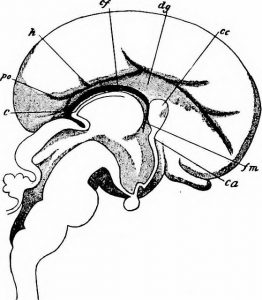
Source: Flickr Commons
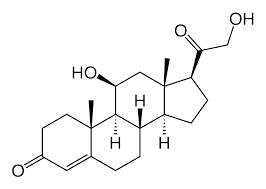
Source: Wikipedia
Not only is there a correlation between acute stress and memory function, but researchers at Harvard University found that the same hormones released during acute stress can aid to enhance immune readiness during ‘fight or flight’ situations which led the subjects to be more alert as well as be more attuned to possible environmental threats. Some examples of possible triggers for acute stress include preparing for a job interview or being involved in competitive sports, whereas examples of triggers for chronic stress include being in a bad relationship or being stuck in a job that you dislike for a long period of time.
Although acute levels of stress can be beneficial for some individuals, one’s personal experience is a big factor in determining whether a response to stress, even at low levels, can lead to positive or negative effects. For an example, if a person was to have a history of post-traumatic stress disorder, even stress at low levels can trigger a negative response.
The takeaway message is that although too much stress can lead to adverse consequences to one’s health, the right amount of acute stress can improve brain performance. Therefore it is definitely worth figuring out where your own optimal stress level lies.
If you are still experiencing stress after reading this post here is another way to make stress your friend.
Source: https://www.youtube.com/watch?v=RcGyVTAoXEU
Author: Jasmine Hyun
For millenials, the driving force behind entertainment and productivity is social media. Canadians’ growing usage of mobile phones is reaching wider audiences, but as with all good things, is too much dangerous?

Source: Shutterstock Image Library
Habits are what define us. As smartphones become more convenient and available to us, so does the itch to check every few minutes. But why are we so inclined to see a screen, even solely as an impulse? Harvard scientists answered the discussion with a groundbreaking discovery: “individuals place high subjective value on opportunities to communicate their thoughts and feelings to others and that doing so engages neural and cognitive mechanisms associated with reward”. Though we are social beings, the proof of our intrinsic feelings of reward when showcasing ourselves means our lives are dependent on approval, whether we want it or not. Social media amplifies the reward while conveniently placing public metrics to invoke a deeper dependence. The article implies that as social media becomes more integrated with our lives, our dependence could potentially be on the level of necessities, such as food or shelter, to sustain our lives. As news of the study came out, social media usage transformed from an activity to a concern.

Source: American Marketing Association
Research spawned from social media like wildfire into the neuroscience community, with experts piecing together the science behind the effects. Brain imaging directly relates viewing photos on Facebook with activity across the amygdala and striatum, which hold control over our emotions and impulses. These sections are most active when our nerves receive rewards in the form of dopamine, which codes for happiness. Although there is nothing wrong with feeling happy, continuously feeling this way will polarize how you may normally act, whether with greater motivation or less. Just think of dopamine as a drug; in natural amounts, dopamine allows us to be more active and positive, but when taking too much, we can become so overloaded with emotion that we may become too euphoric or too depressed.

Source: Huffington Post India
Alongside neurological changes, behavioural changes are just as prevalent. When we are locked into needing the attention of others, we are locked into a cycle of wanting to feel happy and feeding our emotions. With each successive post or comment, meeting the dopamine needs becomes more challenging. In between intervals, the lack of engagement can lead to depression and loneliness.

Source: Statista Analytics Portal
Social media is here and it is spreading. Statista puts the pandemic in perspective. The number of social media users worldwide from 2010 to 2021 will grow from 0.97 billion to 3.02 billion within a decade. If you can just imagine what one billion means, multiply that by three. The spread, the growth, and the scale means you can guarantee the world is affected in a major way.
As prevalent a problem as social media addiction is in our world, there is no recognized treatment. Research in the past year has spiked to address the issue, including formally defining the problem as a start. There are more questions than answers, but for now, all we can really do is hold tight and keep our real friends close.
– Aaron Yen
One longer inspirational seminar about this topic can be found below. Simon Sinek approaches the societal problem of social media in much greater detail, and addresses everyone with “the millenial question”.


Do you enjoy eating food? Do you enjoy being able to indulge on numerous varieties of food all in one place? Well a Buffet restaurant or an All-You-Can-Eat (AYCE) restaurant has been invented due to this demand. Ever since the buffet style restaurants have been pushed out in 1939, it has grown immensely in popularity. However, many people are not aware of the health risks associated with these meals.
The AYCE buffet restaurants has one main crude goal, it is to fill the customers’ stomach as cheaply and as quickly as possible. This is called the “Fill the Customer Belly Cheaply” metric. In order to do this, these restaurants provide the perception that the food is high quality and attractive to the customers, while minimizing food waste. The menus are usually flexible, featuring many different cuisines and cooking techniques, but these are usually saturated with cheap vegetables and meats, and they mainly use seasonal ingredients. Because of this, people not only over-indulge on the food but they are also taking in foods with minimal nutrients.

There are two reasons why people overeat at buffet tables. The first reason is that they have a mindset that they must eat the amount of food equivalent to the amount of dollars they spent. The second reason is “ingestion analgesia”, the role of this is to defend eating from ending. Even when your stomach has reached its maximum capacity, you still keep eating. You block out the painful feedback from these feelings by releasing endogenous opiates into our brain and body. This is also the reason why people tend to eat dessert after their meals, the reaction to stomach pain due to overeating is reduced when you eat something sweet. The negative effects of overindulging on food includes: sugar level spikes, which could lead to Type 2 diabetes; expansion of waist size, building fat on your waist area is extremely dangerous and is the cause of many cancers and health issues; and the acidity level in your body increases and can cause a serious condition called reflux.
In conclusion, it is important to note the negative effects of overeating, not only in buffets, but also on an average day. It is the best when you eat to the point that you are 80% full per meal, with an optimal diet having well-balanced portions of each food category. The next time you go to an All-you-can-eat restaurant, remember the negative impacts overeating has and control your portions as appropriate.
-Cyndi Yan
Posted in Public Engagement, Science Communication, Science in News, Uncategorized
Tagged diabetes, ingestion analgesia, overeating, reflux
Where would modern astronomy be without scientists like Galileo Galilei, Nicolaus Copernicus or Johannes Kepler? We probably would not be scanning the stars of the Milky Way for exoplanets only 450 years later. We owe a lot to these scientists for their ingenuity.

We have moved on from the days of handheld telescopes in the 1600’s to ones that now orbit the Earth and our Sun. More specifically, I am referring to the Kepler Space Telescope which has been operated by the National Aeronautical & Space Administration since its launch in March 2009. In the earliest days of astronomy, scientists exploration of the cosmos was limited by the technology at the time. The first handheld telescope was created by Hans Lippershey in 1608, and it wasn’t until 1990 when the Hubble Space Telescope was launched that we could begin to learn more about our past. Kepler took to the skies 19 years later for a more focused and significant mission (in my humble opinion as a student of astronomy).

Kepler’s job is simple. Launch up from Earth and be placed in a heliocentric orbit where it will scan the same 150,000 stars in the Cygnus constellations. In doing so, NASA is hoping to confirm the existence of exoplanets orbiting stars outside of our solar system. This is fascinating, to think that in just over 400 years we have progressed from a geocentric model of our solar system to accepting that we revolve around the sun and to finally acknowledge the existence of thousands of planets orbiting hundreds of thousands of stars. This is quite literally just the tip of the iceberg to discovering life on other planets.
Kepler uses what is known as the transit method to discover these exoplanets. This means that Kepler stares at the same 150,000 stars looking for a decrease in the amount of light produced by any star, once these dips in light have been recorded by repeating observations, astronomers can confirm the existence of an exoplanet. This video shows what I described.
I believe that the transit photometry method is currently our best opportunity to discovering more exoplanets. We have seen a tremendous increase in confirmed exoplanets since its launch, and Kepler is consistently delivering more confirmed exoplanets to present day. Unfortunately, Kepler encountered technical difficulties in 2014 and its mission was restructured and released as K2, its mission has been altered but it remains in service to this day.
This blog is on the same topic as my individual short presentation I gave last week. As a CMS student focussing on Physics/Astronomy, Math, and Earth & Ocean Sciences these scientific advancements are on the cutting edge of astronomical discovery and I believe it is a subject that deserves our attention. Although we may have thought at one point to be unique in this universe, it is becoming abundantly clear we may have neighbours.
“Two possibilities exist: either we are alone in the Universe or we are not. Both are equally terrifying.” – Arthur C. Clarke
Author: Ryan Berg
Posted in Public Engagement, Science Communication, Science in News
Tagged exoplanet, kepler, NASA, space, telescope, transit method, UBC
People are great at coming up with terrible ideas, even when those people are scientists. Bad ideas can be harmless, like Lamarck’s theory of inheritance, or more sinister, like eugenics, an idea which inspired forced sterilizations and worse. The beauty of science lies in how these bad ideas are replaced by newer and better ideas. These bad ideas are old ideas like all old ideas, right?
Wrong. The history of science is overflowing with terrible ideas but a few gems remain hidden among the asininity.
A new robot, designed by Dr. Dana Damian at the University of Sheffield is based on one of these gems. The robot connects to a pig’s esophagus with two rings. Soft, wrinkled skin protects the robot’s position sensors and motors that slowly stretch the robot and the tissue it’s attached to. The robot was built with diseases like short bowel disease or esophageal atresia in mind. The robot elongated a pig’s esophagus by 77% over nine days and this elongation was almost entirely due cell division, not cells being stretched. By stretching the pig’s tissue, the robot encouraged cells to divide and build a longer esophagus.
Dr. David Mooney, a professor of Bioengineering at Harvard University, explained the ideas behind Dr. Damian’s robot are not new.
“We have long appreciated physical forces regulate biology,” he said in the Science Friday interview. He cites prescribing weight lifting regimen to osteoporosis patients as lifting weights has been shown to increase bone density and strength, helping combat the disease.
Robots like Dr. Damian’s could be implanted into newborns to treat physical ailments like atresia but the possibilities these robots raise are more far more exciting and wide reaching.
Robots applying steady and long-lasting mechanical stress could be used to stimulate stem cells to divide and specialize. This would simplify processes required to work with stem cells today which are expensive and potentially dangerous. A robot that could mechanically stimulate new stem cells for use in healing and recovering, while years away from clinical use, is now has proof of concept.
What other ideas has science relegated to dusty book shelves that could prove to be revolutionary today?
Using leeches and maggots in medicine are the best known examples of science breathing new life into old ideas. Scientists need to look back at old ideas, theories, and research with the benefits of modern knowledge and technology. Retrospective research could lead to new (but old) ideas of how our world works, avenues of research, or treatments for disease.
Oliver Sack’s, the late neurologist and writer, ended his essay Scotoma: Forgetting and Neglect in Science by exploring the nature of ideas in science. “Ideas, like loving creatures, may arise and flourish, going in all directions, or abort and become extinct, in completely unpredictable ways,” he wrote. “[This] brings home a sense that science is not an ineluctable process but contingent in the extreme.”
– Koby Michaels
Posted in Biological Sciences, Issues in Science, Science in News
Tagged bioengineering, history of science, robotics